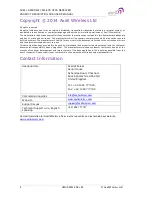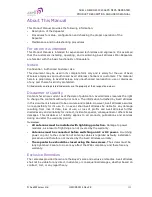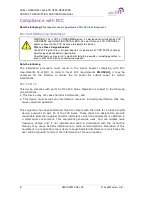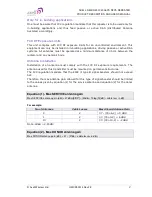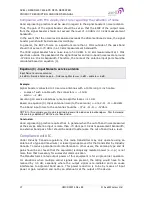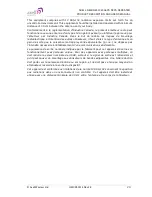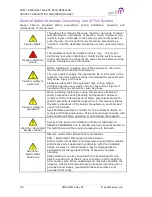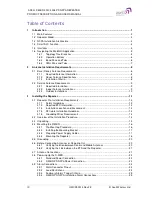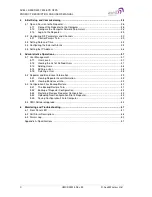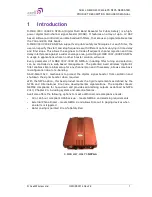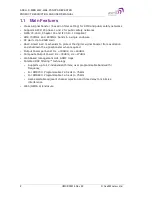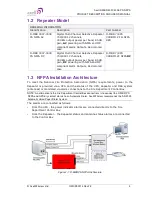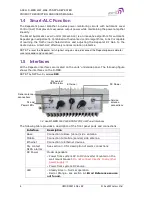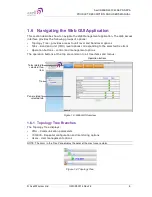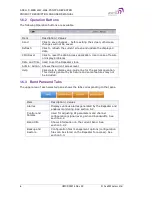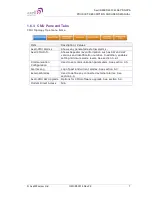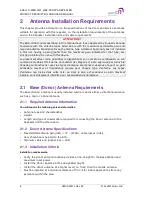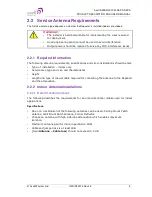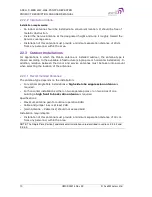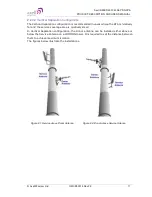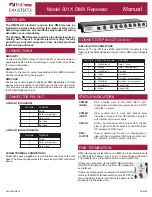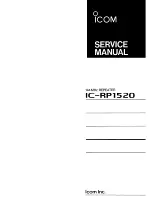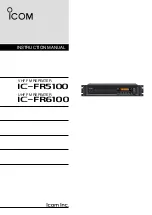
AXELL D-MBR 3007-3008-PS NFPA REPEATER
PRODUCT DESCRIPTION AND USER’S MANUAL
VI
UMCD00013 Rev 2.2
© Axell Wireless Ltd
Compliance with FCC deployment rule regarding the radiation of noise
Good engineering practice must be used in regard to the signal booster’s noise radiation.
Thus, the gain of the signal booster should be set so that the EIRP of the output noise
from the signal booster should not exceed the level of -43 dBm in 10 kHz measurement
bandwidth.
In the event that the noise level measured exceeds the aforementioned value, the signal
booster gain should be decreased accordingly.
In general, the ERP of noise on a spectrum more than 1 MHz outside of the pass band
should not exceed -70 dBm in a 10 kHz measurement bandwidth.
The 3308 signal booster has a noise level of -43 dBm in 10 kHz measurement at 1 MHz
spectrum outside the passband of the signal booster and an
in-band
noise level at around
-37 dBm in a 10 kHz bandwidth. Therefore, the noise at the antenna input port should be
calculated based on equation (3).
Equation (3) - Input Noise to service antenna
Input Noise to service antenna:
-43 dBm + Service Antenna gain – Antenna splitter losses in dBi – cable loss in dB
Example:
Signal booster connected to 10 service antennas with a 100m long ½ inch cable.
•
Losses of such a cable with the connectors = ~ 11dB
•
Gain = ~ 2 dBi
Assuming 10 service antennas: antenna splitter losses = 11 dB
Based on equation (3) Input antenna noise (to the antenna) = -43+2-11 -11=-63 dBm
The inband input noise to the antenna should be -37+2 -11-11= -57dbm
NOTE: In this example you may be required in general to add an external bandpass filter that would
attenuate by additional 7 dB the out of band noise.
Conclusion:
Good engineering practice requires that in general when the out of band noise measured
at the service antenna input is more than -70 dbm per 10 kHz measurement bandwidth,
an external band pass filter should be added to attenuate the out of band noise level.
Compliance with IC
Under Industry Canada regulations, this radio transmitter may only operate using an
antenna of a type and maximum (or lesser) gain approved for the transmitter by Industry
Canada. To reduce potential radio interference to other users, the antenna type and its
gain should be so chosen that the equivalent isotropically radiated power (e.i.r.p.) is not
more than that necessary for successful communication.
The Manufacturer's rated output power of this equipment is for single carrier operation.
For situations when multiple carrier signals are present, the rating would have to be
reduced by 3.5 dB, especially where the output signal is re-radiated and can cause
interference to adjacent band users. This power reduction is to be by means of input
power or gain reduction and not by an attenuator at the output of the device.


